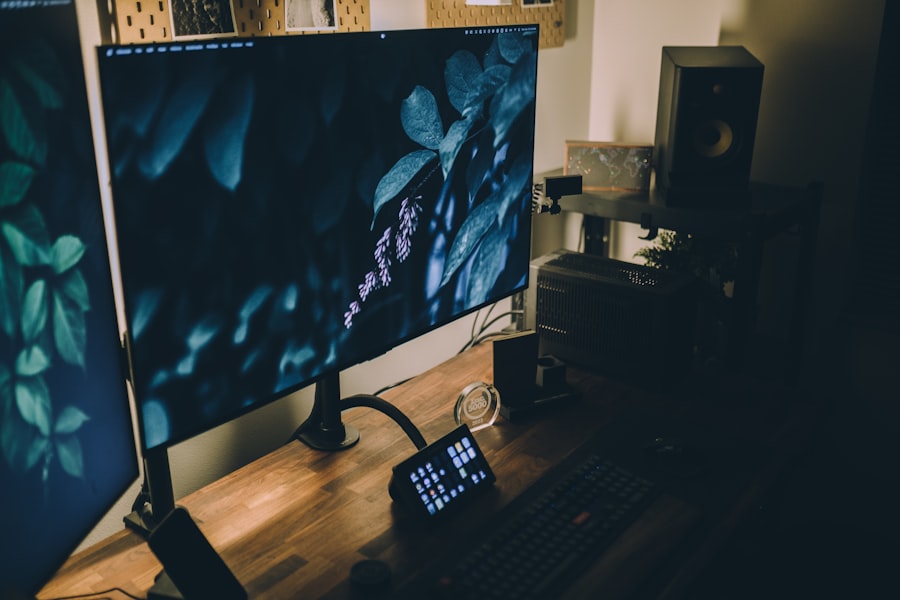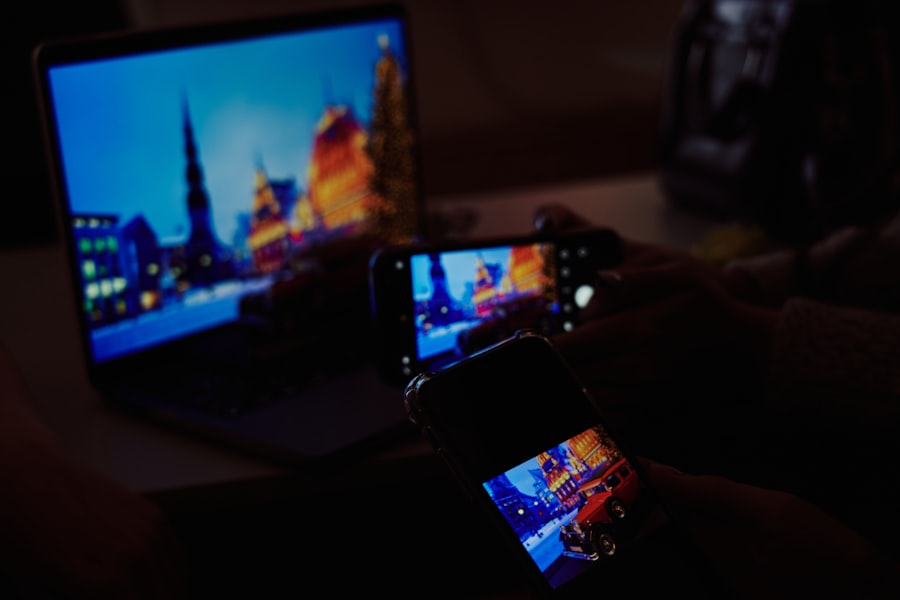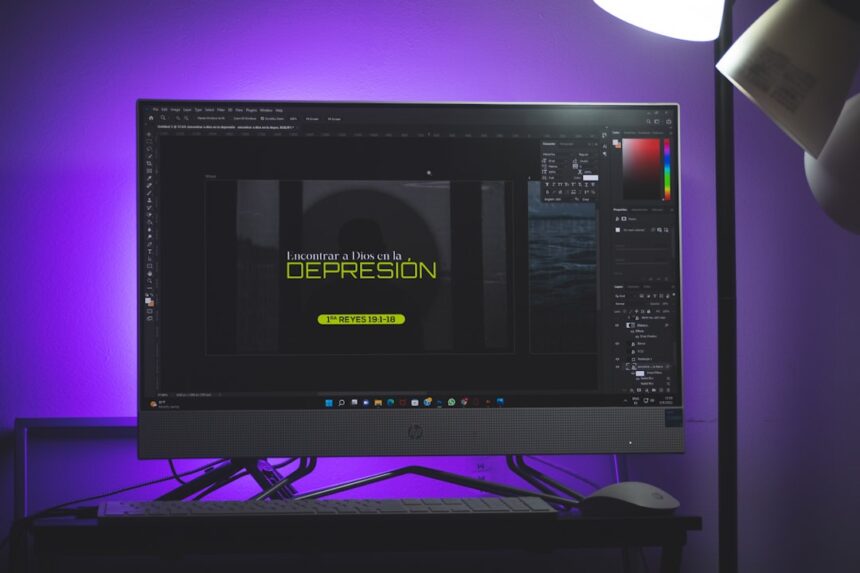In today’s digital age, screen addiction has become a prevalent issue that affects individuals of all ages. You may find yourself spending countless hours glued to your devices, whether it’s scrolling through social media, binge-watching your favorite shows, or playing video games. This compulsive behavior can lead to negative consequences in various aspects of your life, including relationships, work performance, and mental health.
Understanding the nature of screen addiction is the first step toward regaining control over your life and fostering healthier habits.
You might notice that your screen time has increased gradually, making it difficult to recognize when it has crossed the line from casual use to addiction.
The allure of instant gratification provided by screens can be hard to resist, as they offer a constant stream of entertainment and information. However, acknowledging that this behavior can be detrimental is crucial for your well-being and personal growth.
Key Takeaways
- Screen addiction is a real issue that can have negative impacts on mental and physical health.
- Signs of screen addiction include neglecting responsibilities, irritability when not using screens, and using screens to escape negative emotions.
- Setting boundaries and limits on screen time is crucial in combating screen addiction.
- Finding alternative activities such as exercise, hobbies, and socializing can help reduce screen time.
- Practicing mindfulness and meditation can help individuals become more aware of their screen usage and its impact on their well-being.
Recognizing the Signs of Screen Addiction
Recognizing the signs of screen addiction is essential for taking the necessary steps toward change. You may find yourself feeling anxious or irritable when you are unable to access your devices, indicating a dependency on screens for emotional regulation. Additionally, you might notice that you prioritize screen time over important tasks or social interactions, leading to feelings of isolation or neglect in your relationships.
These signs can serve as red flags, prompting you to evaluate your relationship with technology. Another common indicator of screen addiction is the inability to cut back on usage despite knowing its negative effects. You may set intentions to limit your screen time but find yourself falling back into old habits.
This cycle can be frustrating and disheartening, but recognizing it is a vital step toward breaking free from the grip of addiction. By being honest with yourself about your habits and their impact on your life, you can begin to take proactive measures to regain control.
Setting Boundaries and Limits

Once you have recognized the signs of screen addiction, setting boundaries and limits becomes crucial in reclaiming your time and mental space. You might start by establishing specific times during the day when you allow yourself to use screens, creating a structured schedule that prioritizes other activities. For instance, you could designate certain hours for work or family time, ensuring that screens do not intrude on these important moments.
By setting clear boundaries, you can create a healthier balance between screen time and real-life interactions. In addition to time limits, consider implementing device-free zones in your home. You may choose to keep screens out of the bedroom or dining area, fostering an environment that encourages face-to-face communication and relaxation.
These boundaries can help you cultivate a more mindful approach to technology use, allowing you to enjoy the benefits of screens without becoming overwhelmed by them. Remember that consistency is key; by sticking to these limits, you can gradually reshape your habits and create a more balanced lifestyle.
Finding Alternative Activities
| Activity | Number of Participants | Duration (hours) |
|---|---|---|
| Hiking | 25 | 3 |
| Cooking Class | 15 | 2 |
| Art Workshop | 20 | 4 |
Finding alternative activities is an essential part of overcoming screen addiction. You may discover that there are countless fulfilling pursuits waiting for you beyond the glow of a screen. Engaging in hobbies such as reading, painting, or gardening can provide a sense of accomplishment and joy that screens often fail to deliver.
By exploring new interests or revisiting old ones, you can fill your time with enriching experiences that promote personal growth and creativity. Physical activity is another excellent alternative to screen time. You might consider joining a local sports team, taking up yoga, or simply going for daily walks in nature.
These activities not only help reduce reliance on screens but also improve your physical health and mental well-being. As you immerse yourself in these alternative pursuits, you’ll likely find that your desire for screen time diminishes, allowing you to cultivate a more balanced lifestyle.
Practicing Mindfulness and Meditation
Practicing mindfulness and meditation can significantly aid in overcoming screen addiction. You may find that incorporating mindfulness techniques into your daily routine helps you become more aware of your thoughts and feelings regarding screen use. By taking a few moments each day to focus on your breath or engage in guided meditation, you can cultivate a sense of presence that counters the mindless scrolling often associated with screen addiction.
Mindfulness encourages you to observe your urges without judgment, allowing you to understand the underlying emotions driving your screen use. You might discover that boredom, stress, or anxiety often lead you to seek solace in screens. By recognizing these triggers, you can develop healthier coping mechanisms that do not rely on technology.
As you practice mindfulness regularly, you’ll likely find it easier to resist the pull of screens and make more intentional choices about how you spend your time.
Seeking Professional Help

If you find that your efforts to combat screen addiction are not yielding the desired results, seeking professional help may be a beneficial step. A therapist or counselor specializing in behavioral addictions can provide valuable insights and strategies tailored to your unique situation. You may feel hesitant to reach out for help, but remember that seeking support is a sign of strength and a commitment to improving your well-being.
Professional guidance can help you explore the underlying issues contributing to your screen addiction. You might uncover patterns related to anxiety, depression, or low self-esteem that have led you to seek comfort in screens. By addressing these root causes with a trained professional, you can develop healthier coping strategies and build resilience against the urge to retreat into technology.
Creating a Support System
Creating a support system is vital in your journey toward overcoming screen addiction. Surrounding yourself with friends and family who understand your goals can provide encouragement and accountability as you work toward healthier habits. You might consider sharing your intentions with loved ones and inviting them to join you in reducing screen time together.
This shared commitment can foster a sense of camaraderie and make the process more enjoyable. In addition to personal connections, consider seeking out support groups or online communities focused on overcoming screen addiction. Engaging with others who share similar struggles can provide valuable insights and motivation as you navigate this journey together.
By building a robust support system, you’ll have people to lean on during challenging moments and celebrate victories with as you work toward a healthier relationship with technology.
Managing Stress and Anxiety
Managing stress and anxiety is crucial in combating screen addiction effectively. You may find that stress often drives you to seek refuge in screens as a way to escape reality temporarily. However, developing healthier coping mechanisms can help break this cycle.
Consider exploring relaxation techniques such as deep breathing exercises, progressive muscle relaxation, or journaling as ways to manage stress without resorting to screens. Engaging in regular physical activity can also play a significant role in reducing stress levels. You might discover that exercise not only improves your physical health but also boosts your mood and overall well-being.
By incorporating stress management techniques into your daily routine, you’ll be better equipped to handle life’s challenges without relying on screens as a crutch.
Establishing a Daily Routine
Establishing a daily routine can provide structure and purpose in your life while reducing reliance on screens. You may find that having a set schedule helps you allocate time for various activities, including work, exercise, hobbies, and social interactions. By creating a balanced routine that prioritizes meaningful experiences over mindless scrolling, you’ll be more likely to stay engaged in real life.
Consider incorporating specific time blocks for screen use within your routine rather than allowing it to consume your day unplanned.
A well-structured routine can help you regain control over your time and foster healthier habits.
Setting Realistic Goals and Expectations
Setting realistic goals and expectations is essential when working toward overcoming screen addiction. You may feel overwhelmed by the prospect of drastically reducing your screen time overnight; however, gradual changes are often more sustainable in the long run. Start by identifying small, achievable goals that align with your overall objectives.
For instance, you might aim to reduce your daily screen time by 30 minutes each week until you reach a more balanced level. As you progress toward these goals, it’s important to celebrate each milestone along the way. Acknowledging your achievements—no matter how small—can boost your motivation and reinforce positive behavior changes.
Remember that setbacks are normal; be kind to yourself during this process and focus on progress rather than perfection.
Celebrating Small Victories
Celebrating small victories is an essential aspect of overcoming screen addiction and maintaining motivation throughout your journey. Each step you take toward reducing screen time deserves recognition, whether it’s successfully implementing device-free zones at home or spending an entire day engaging in alternative activities without reaching for your phone. By acknowledging these accomplishments, you’ll reinforce positive behavior changes and cultivate a sense of pride in your progress.
Consider finding creative ways to celebrate these victories with friends or family members who support your journey. You might plan a special outing or treat yourself to something enjoyable as a reward for reaching specific milestones. Celebrating small victories not only boosts morale but also serves as a reminder of how far you’ve come in reclaiming control over your relationship with technology.
In conclusion, overcoming screen addiction requires self-awareness, commitment, and support from those around you. By understanding the nature of this addiction and recognizing its signs, you can take proactive steps toward creating healthier habits and finding fulfillment beyond screens. Through setting boundaries, exploring alternative activities, practicing mindfulness, seeking professional help when needed, managing stress effectively, establishing routines, setting realistic goals, and celebrating small victories along the way, you’ll be well on your way to achieving a balanced relationship with technology that enhances rather than detracts from your life.
In today’s digital age, screen addiction has become a prevalent issue, affecting productivity and mental well-being. To combat this, it’s essential to develop strategies that help reduce screen time and enhance focus. One effective approach is to set specific goals and time limits for screen usage, allowing for more intentional and mindful interactions with technology. Additionally, incorporating regular breaks and engaging in offline activities can significantly improve concentration and reduce dependency on screens. For more insights and practical tips on overcoming screen addiction, you can explore this related article on Productive Patty, which offers a comprehensive guide to regaining control over your digital habits.
WATCH NOW! Nietzsche: Destroy Your Laziness Before It Destroys Your Career
FAQs
What is screen addiction?
Screen addiction, also known as technology addiction, refers to the excessive and compulsive use of digital devices such as smartphones, computers, and tablets. It can lead to negative effects on a person’s physical, mental, and emotional well-being.
What are the signs of screen addiction?
Signs of screen addiction may include spending excessive amounts of time on digital devices, neglecting responsibilities in favor of screen time, experiencing withdrawal symptoms when not using digital devices, and difficulty controlling or reducing screen time despite negative consequences.
How can screen addiction affect focus and productivity?
Screen addiction can lead to decreased focus and productivity as it can be a constant source of distraction. Excessive screen time can also lead to decreased attention span and difficulty concentrating on tasks.
What are some strategies to beat screen addiction and improve focus?
Strategies to beat screen addiction and improve focus may include setting specific time limits for screen use, taking regular breaks from digital devices, engaging in physical activities or hobbies that do not involve screens, and practicing mindfulness or meditation to improve attention and focus.
Why is it important to address screen addiction and improve focus?
It is important to address screen addiction and improve focus because excessive screen time can have negative effects on mental and physical health, as well as on productivity and overall well-being. By reducing screen time and improving focus, individuals can experience improved mental clarity, better productivity, and a healthier balance in their lives.




